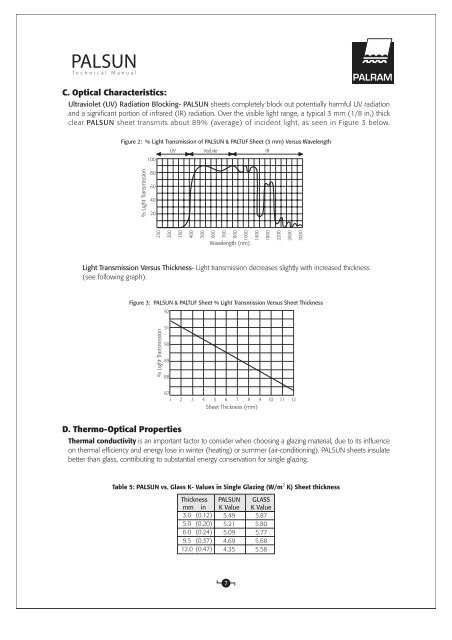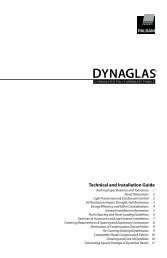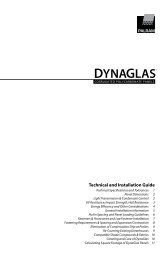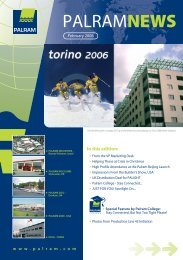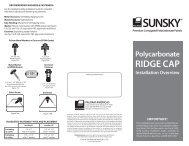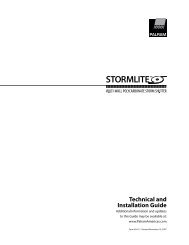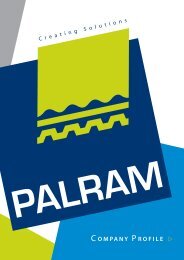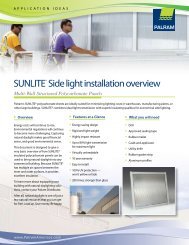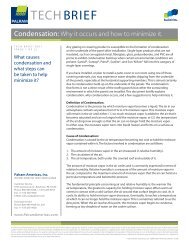PALSUN Technical Guide
PALSUN Technical Guide
PALSUN Technical Guide
Create successful ePaper yourself
Turn your PDF publications into a flip-book with our unique Google optimized e-Paper software.
<strong>PALSUN</strong><strong>Technical</strong> ManualC. Optical Characteristics:Ultraviolet (UV) Radiation Blocking- <strong>PALSUN</strong> sheets completely block out potentially harmful UV radiationand a significant portion of infrared (IR) radiation. Over the visible light range, a typical 3 mm (1/8 in.) thickclear <strong>PALSUN</strong> sheet transmits about 89% (average) of incident light, as seen in Figure 3 below.Figure 2: % Light Transmission of <strong>PALSUN</strong> & PALTUF Sheet (3 mm) Versus WavelengthUV Visibile IR100% Light Transmission8060402025030035040050060070080010001400Wavelength (nm)1800220026003000Light Transmission Versus Thickness- Light transmission decreases slightly with increased thickness(see following graph).Figure 3: <strong>PALSUN</strong> & PALTUF Sheet % Light Transmission Versus Sheet Thickness92% Light Transmission91908988871 2 3 4 5 6 7 8 9 10 11 12Sheet Thickness (mm)D. Thermo-Optical PropertiesThermal conductivity is an important factor to consider when choosing a glazing material, due to its influenceon thermal efficiency and energy lose in winter (heating) or summer (air-conditioning). <strong>PALSUN</strong> sheets insulatebetter than glass, contributing to substantial energy conservation for single glazing.Table 5: <strong>PALSUN</strong> vs. Glass K- Values in Single Glazing (W/m 2 K) Sheet thicknessThicknessmm in3.0 (0.12)5.0 (0.20)6.0 (0.24)9.5 (0.37)12.0 (0.47)<strong>PALSUN</strong>K Value5.495.215.094.694.35GLASSK Value5.875.805.775.685.587


